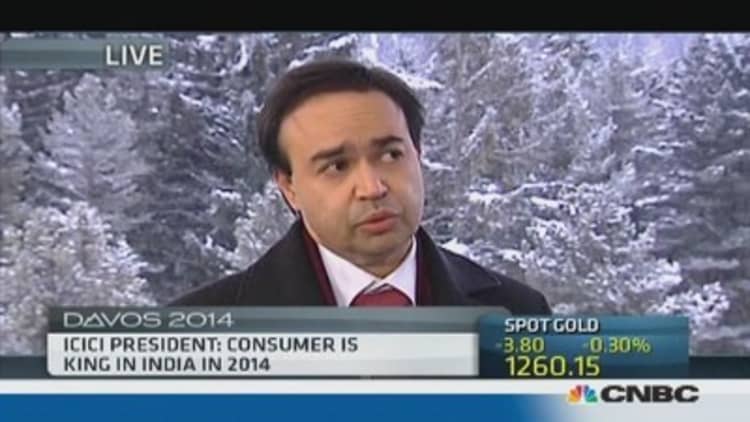When budget airline Air Asia launched its inaugural domestic flight between Bangalore and Goa in India last month, the tickets – which were priced at a cut-throat rate of $4.50 one way – were sold out in 48 hours.
"I booked mid-June. It was cheaper than a bus ride! I had no intention to visit Goa and the taxi to the airport cost more but the price was worth it," said 31-year old techie Pallavi Patil.
Meanwhile, San Francisco-based Uber recently launched a stripped-down, lower-priced version of its cab hiring service app in Bangalore, Delhi and Hyderabad. With a base fare of $0.83 and just 25 cents per kilometer and less than 2 cents a minute, UberX is the cheapest service it offers worldwide to customers.
More significantly, it is an unprecedented move by the company that began four years ago with a global focus on high-end cab services.
Read MoreAirAsia Japan will turn a profit within a year: Fernandes
Welcome to the world of the increasingly price-sensitive Indian consumer where bargain-hunting is the norm and brand loyalty non-existent.
"It's a never before world," say Rama Bijapurkar, India's foremost retail strategist and thought leader, describing the fast-growing middle class consumer as a "monster hammering down prices relentlessly" in his pursuit of value and quality.
For a sampling of how this so-called promiscuous consumer operates, look no further than India's smartphone market where high-end offerings like Apple's iPhones have failed to make significant inroads. Instead, local players like Micromax, Karbonn and Lava now dominate the market. Their strategy? Launching smartphones that priced in the $45-$75 band – a bargain compared with the iPhone 5S which retails at $850.
Global players are taking notice – Google last month announced that it would launch a sub-$100 smart phone for the Indian market this fall that would feature a 4.5-inch screen, dual-SIM slot, removable SD card and FM radio. While Mozilla is reportedly launching a series of inexpensive Firefox OS smartphone models for the market, priced at around $50.
"If companies try to push global products on to the mass Indian market, they will be frustrated. The annual average income of the Indian consumer is not touching $50,000 in a long time for him to consume 'global' products or best practices. To thrive in India, winners must continue to customize, innovate and adapt to this market reality," said Debashish Mukherjee, a partner at AT Kearney.

And to ignore this burgeoning consumer market would be a mistake, analysts say.
The average annual disposable income in India increased by more than 29 percent in real terms between 2007 and 2012 while consumer spending was up by more than 25 percent, fueling a demand for everything from cars, hotels, restaurants to clothes, food and healthcare, according to Euromonitor International consumer report.
And according to a McKinsey report, India will be a $450 billion retail market of over 300 million shoppers in the next 12 months.
Read MoreHow BRICS bank hurts India's Modi
At the heart of the Indian consumer market is the middle class of "strivers" and "seekers" where 60 percent of shoppers buy at more than one retail store compared to 10 percent Brazilians or 24 percent Chinese, according to McKinsey.
"The key thing for foreign marketers to do would be to change their mindset from low-volume, high margin returns to high volume, thin margin products to avoid 'rejection' from Indian consumers. It requires relearning and acceptance," said Bijapurkar.
Innovators to thrive
To pander to this market, companies are changing up their business models and product offerings.
The Tata group's Ginger budget hotel chain, for example, has moved from ownership to lease rental model to increase its footprint through an asset-light business model.
"We provide smart facilities at surprisingly affordable rates and tapping to new segments like the business women who made up 25 percent of business traveler in 2011 and are set to grow 891 percent by 2030," said Mr. P. K. Mohankumar, MD & CEO, Roots Corporation.
Read MoreFive reasons why India's rebound is real
Meanwhile, startups like Zostel are taking the hospitality industry into unchartered territory by focusing on the hitherto neglected 18-35 age group of travelers. "We are India's first branded super-awesome-cool backpacker hostel chain. We are the most 'liked' hostel chain in the world on Facebook. We ranked at the top on Tripadvisor in all cities and our breakeven is 15-18 month for every hostel," said co-founder Paavan Nanda.
With a myriad of players willing to bend over backwards to win over Indian consumers, global luxury brands stand little chance of success in selling their global products at global prices.
"Yesterday, it might have made sense for a senior corporate executive to shell out $ 500 for a business class ticket on a Mumbai-Delhi sector. Today with newer airlines like Indigo and GoAir offer express check-ins, free vouchers and Wi-Fi at lounges and even more leg room in the economy class; the value proposition has completely changed for a passenger like me," said AT Kearney's Mukherjee.

